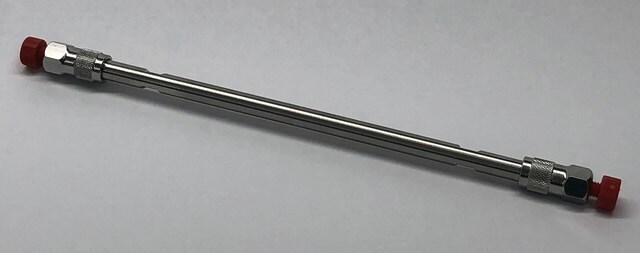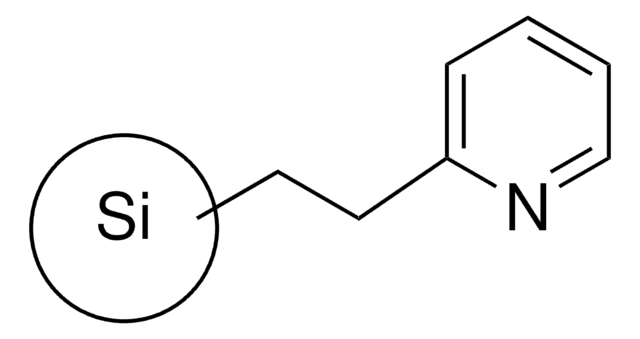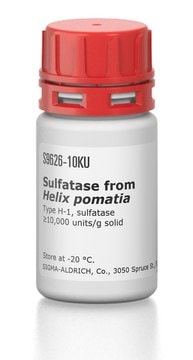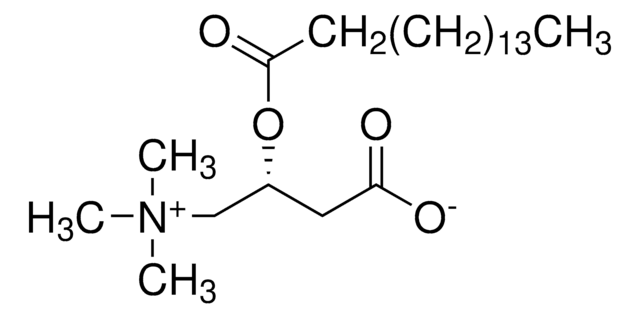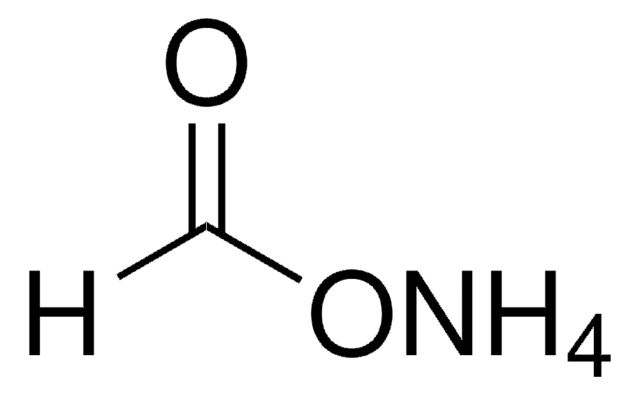54127-U
2-(2-Pyridyl)ethyl Silica Gel
bed wt 100 mg, volume 1 mL, pk of 108
About This Item
Productos recomendados
composition
bed wt, 100 mg
Quality Level
packaging
pk of 108
technique(s)
solid phase extraction (SPE): suitable
volume
1 mL
matrix active group
WAX phase
application(s)
food and beverages
separation technique
ion exchange
Categorías relacionadas
General description
Sample Matrix Compatibility: Organic or aqueous Solutions
- Weak anion exchanger ideal for extracting strong basic compounds that remain charged at all pH levels
- Unlike conventional weak anion exchange SPE phases such as -NH2 (aminopropyl) that have a pKa of 9-10, a pH ≤ 7 is required to protonate or ionize the stationary phase to facilitate analyte retention. Elution is typically done by increasing the pH to 11 resulting in neutralization of the SPE phase.
- 2-(2-pyridyl)-ethyl silica gel has a pKa of ~6. Therefore, analyte elution is feasible at a pH ≥ 7. This characteristic is important for extracting analytes that are not stable (e.g. hydrolyzes) at high pHs typically required for elution when using traditional weak anion exchangers.
- Ideal for extracting acyl-coenzyme A esters from tissue.
- For more information, please see: Minkler, P.E., Kerner, J., Ingalls, S.T., Hoppel, C.L., Novel isolation procedure for short-, medium-, and long-chain acyl-coenzyme A esters from tissue, Analytical Biochemistry 376 (2008) 275–276
signalword
Warning
hcodes
Hazard Classifications
Eye Irrit. 2 - Skin Irrit. 2 - STOT SE 3
target_organs
Respiratory system
Storage Class
11 - Combustible Solids
wgk_germany
WGK 3
flash_point_f
Not applicable
flash_point_c
Not applicable
Elija entre una de las versiones más recientes:
Certificados de análisis (COA)
It looks like we've run into a problem, but you can still download Certificates of Analysis from our Documentos section.
Si necesita más asistencia, póngase en contacto con Atención al cliente
¿Ya tiene este producto?
Encuentre la documentación para los productos que ha comprado recientemente en la Biblioteca de documentos.
Artículos
SPE retention mechanism in this case is based on the electrostatic attraction of charged functional groups of the analyte(s) to oppositely charged functional groups on the sorbent.
Protocolos
Retention occurs through polar interaction between the sorbent and analytes. Typical sample matrices that can be employed in normal-phase SPE include hydrocarbon or fatty oils diluted in a solvent like hexane, isooctane, chlorinated solvent, THF, diethyl ether, or ethyl acetate.
Nuestro equipo de científicos tiene experiencia en todas las áreas de investigación: Ciencias de la vida, Ciencia de los materiales, Síntesis química, Cromatografía, Analítica y muchas otras.
Póngase en contacto con el Servicio técnico